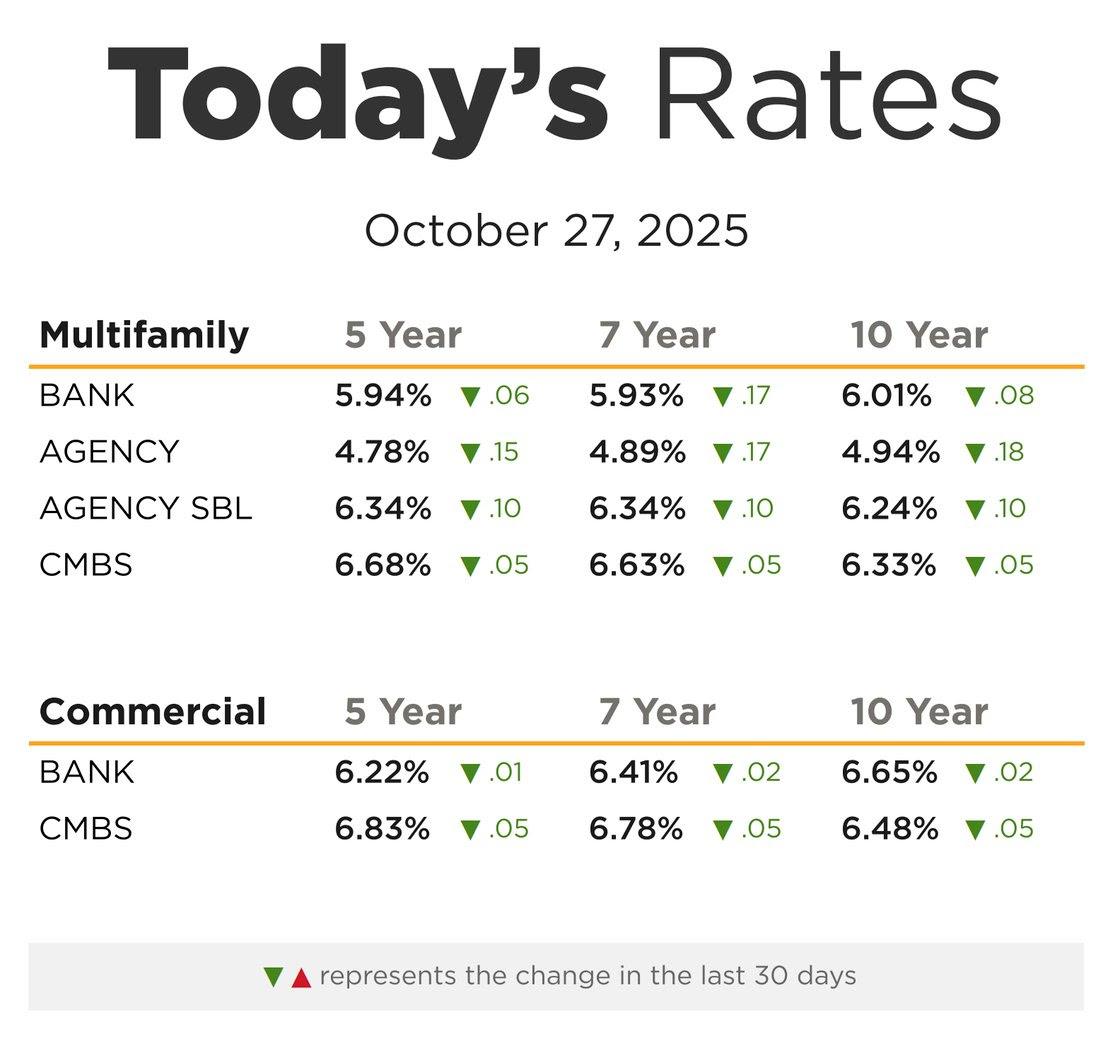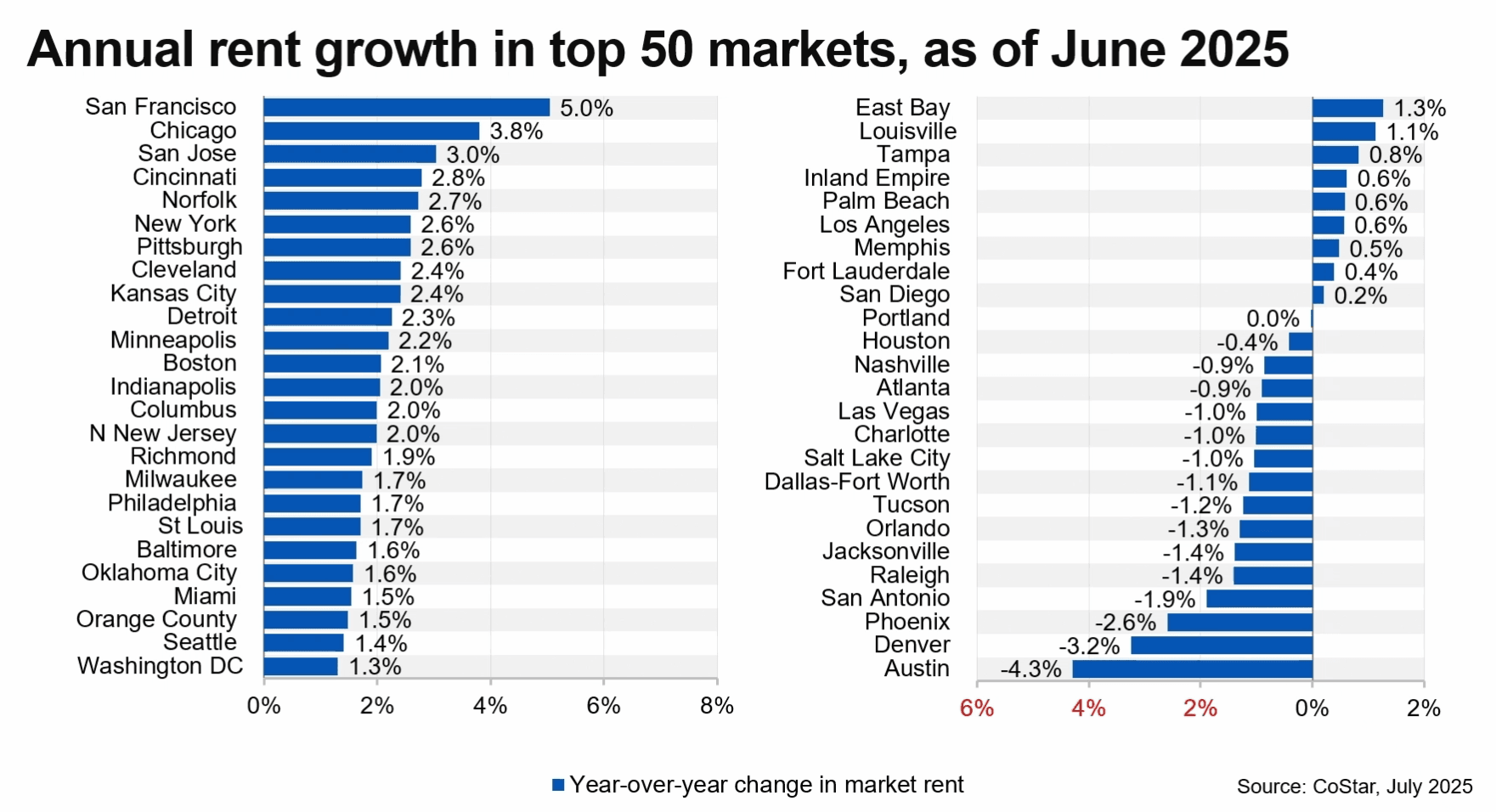When COVID-19 hit in mid-March, U.S. apartment operators were quick to cut rents as demand all but evaporated. And now, as leasing volumes surge, rent cuts are quickly disappearing in most big U.S. metros – with the notable exception of most of the nation’s largest Gateway markets.
In the week ending June 20, executed rents for new leases inched up 0.08% compared to the same time last year. While this growth is minuscule, it’s a sharp departure from three months of steady rent declines. At one point in mid-April, executed rents nationally were down as much as 6.4%.
Rents are rebounding as new lease volumes have surged. In the week ending June 20, total new lease volumes were up a remarkable 18.6% compared to the same time last year in the same-store dataset.
Executed rents reflect prices in actually signed leases sourced from same-store rent rolls in millions of units running on the RealPage platform. Executed rents are a real-time indicator of market movement – very different from asking rents or “effective rents,” which tend to be lagging indicators reflecting all available units without visibility into what’s signed versus what’s offered. Executed rents not only include concessions (which are often unadvertised and offered during lease negotiations) but also factor in lease term lengths since rents can vary based on the term.
Continuing a pattern seen since COVID-19 first hit, large coastal markets are generally the exceptions to the rule. Executed rents dropped by double digits over the last week in Boston, New York, Los Angeles, San Jose, and Oakland. Rents were also down sharply in Minneapolis/St. Paul and San Francisco. In general, these markets are also not benefiting from the rebound in new lease demand.
Sun Belt and Midwest markets are driving the pricing rebound, just as they have on leasing volumes. Among the nation’s top 50 markets, 30 recorded positive growth in executed new lease rents during the week ending June 20. The largest gains came in what would typically be described as slow-and-steady markets, including Virginia Beach, Memphis, St. Louis, Greensboro, Jacksonville, Columbus, Tampa, Cleveland, and Kansas City.
Nashville was also a strong performer in spite of concerns about its exposure to the travel and leisure industries. Three West Coast metros – Riverside, Sacramento, and Portland – broke the mold and outperformed their peers.
Most hot-growth Sun Belt markets recorded flat to modest gains in new lease pricing. That included Dallas, Fort Worth, Charlotte, Phoenix, Houston, Denver, and Las Vegas. Those were perhaps the most impressive results given high lease-up volumes in most of those markets, reflecting the resiliency of those high-demand Sun Belt metros.
However, a spike in COVID-19 cases in many of those metros will provide a big test over the next few weeks. It’s too early to conclude that new lease pricing has effectively recovered, particularly given continued uncertainty about the state of the economy and the looming expiration of expanded unemployment benefits coming at the end of July.
New lease pricing fell 3% to 5% in a handful of key markets: Atlanta, Washington, San Antonio, Philadelphia, Miami, Orlando, and Austin.
While new lease pricing shows signs of recovering, renewal lease pricing remains volatile. Renewal pricing returned to positive territory for much of May before dropping back down in June. In the week ending June 20, executed renewal rents dropped 1.9% compared to the same time last year. The cuts could reflect public sensitivities around renewals, as well as operator priorities, focused on high occupancy and longer lease terms.
Source: RealPage by Jay Parsons Posted Jun 23, 2020
Receive Market Insights
Periodic analysis on rents, pricing, cap rates, and transaction activity across Chicago and key suburban markets.




Join The Discussion